Children need a very strong mathematics foundation to succeed in science, technology, engineering and mathematics (STEM) fields and to ensure STEM fluency. Young children are very curious and enjoy exploration. These attributes must be honed from very early to ensure better mathematics outcomes. Raising mathematics achievement is an issue for home, school and community. Parents, families and teachers must be attune with current research findings guiding teaching and learning for better math outcomes. This post presents why patterning is so important to STEM fluency?
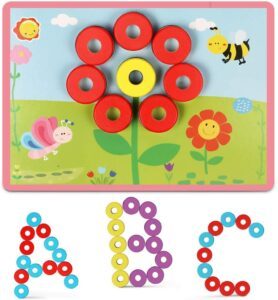
Amazon
Mathematics is often referred to as the science of patterns. Subsequently, patterns are the cornerstone of mathematics as all mathematics is based on pattern and structure. A mathematical pattern is an arrangement of elements in any predictable regularity. The way pattern is organized is called its structure which may be numerical or spatial. A sound understanding of pattern and structure is fundamental to learning multiplicative concepts, the base ten system, unitizing and partitioning in early mathematics learning.
The Importance of Pattern in Early Childhood Math
Current research show students’ ability to pattern has a positive impact on their mathematics achievements in later years and is a precursor to generalizing mathematics. When young children can discern how pattern is systematized they are able to generalize. Therefore, they are able to apply rules and reason mathematically. Patterns provide the foundation for developing algebraic thinking, development of mathematical representation and abstraction. Patterns are more than just content, they are configured as a process, a study skill, a mental habit seeking mathematical regularities and structures.
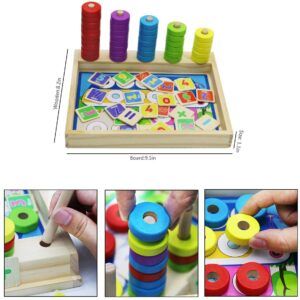
Amazon
Identifying and describing attributes of objects and recognizing similarity and difference in mathematical representations play a critical role in the development of pattern and structure. Patterns also cause the early development of functional thinking, by linking relationships between two data sets. Patterning is a critical skill for children in early math and STEM learning as it aids in the development of spatial awareness, geometric concepts, sequencing, ordering, comparing and classifying. Patterning is also integral to the development of counting and arithmetic structure, base ten and multiplicative concepts, units of measure, proportional reasoning and data exploration.
Young Children and Patterns
Infants, toddlers, and young children discover and use mathematical patterns and relationships to organize their experiences. It is natural for children to use pattern thinking in their daily activities. They learn through routines and rituals. Children pattern activities and create their own patterns with things they find of interest. By using their own logics, children generate patterns of mathematical relationships.
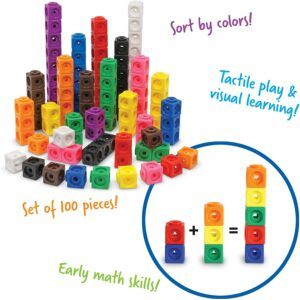
Amazon
Young children’s knowledge results from a combination of independent experiences and interactions with others. As children manipulate materials they use language to express what they perceive and communicate their experiences. Children’s natural curiosity leads them to manipulate the objects in a variety of ways to discover more about them. Children’s ability to think about patterns, numerical quantity, or geometric form depends on the images that children have constructed in their minds (pattern imagery). Children learn through the senses and they learn math through concrete experiences at first usual from simple to complex knowledge. As part of their inquiry, children find out new information or test new ideas from exploration to experimentation. Direct experiences serve as the foundation for abstractions. Children use stored mental images of objects and events to fuel their experimentation and feed predictions. Subsequently, children are able to develop complex math ideas.
Teaching Children Patterns
Young children are usually asked to engage in four key types of activities with repeating patterns. These include copying the pattern, continuing the pattern, completing the pattern, and creating their own repeating pattern. Create repeated pattern and let children identify the repeating pattern. Then ensure children can continue the pattern once they identify the repeating pattern, It must be pointed out that the continuing pattern can continue right and left directions by applying the repeated pattern. Allow children to create their own pattern and let them identify the repeated element. Patterning can be applied to all STEM areas. Patterning focus on ordering and classifying objects, while paying attention to specific properties; recognizing and extending aural and numeric patterns as well as analyzing the behavior of patterns using specific pictorial and verbal representations.
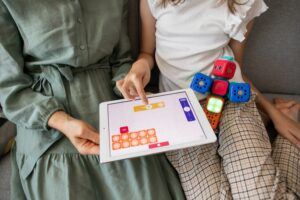
Robo Wunderkind
Playing games can engage and sustain children’s interest in the repetitive use of mathematical skill . Games provide practice for skill building and the best thing about games children are able to do things over and over again. Allowing children to play games to learn to pattern support children’s thinking and emerging logic to build understanding about patterns and relationships in their experiences. The nature of games provides patterns as there are rules to start, sequence, play and end a game. Children can play solo or with partners. They learn the pattern of turn taking when playing games with others.
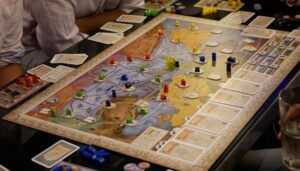
Karthik Balakrishnan
Games should be of interest and the level of the challenge developmentally appropriate. Stories and songs can also provide opportunities to allow for extended activities for patterning. Children may be engage in activities such as making sets by sorting, grouping and counting, ask child to group objects by color or size, lining up sticks in size order, organizing string beans on the dinner plate to make geometric shapes and organizing blocks as they stack them. Thus using simple serrations with different materials, alternating colors, shapes and sizes. Sequence events in a story such as beginning, middle end, use repetitive lines in a story and predict outcome based on pattern in a story. Games can be action games, board games, domino, lotto, snake on ladder counting games, fitting puzzles and games involving one-to-one correspondence.
Disclosure-This page has affiliate or referral links. As an Amazon Associate I earn from qualifying purchases. This means I receive a small commission if you decide to click through and buy anything. This is at no extra cost to you but helps me to maintain my website. The information in this post is based on research and professional experience. I am not paid for my opinions, suggestions or recommendations. I take the time to research the resources and make them available to you. I never recommend poor-quality products or create false reviews for sales. You are free to make your own decisions when purchasing. Full Disclosure
Recommendations
Now that you are ready to engage your children, here are my top two recommendations. You can click on the name at numbers 1-2 and purchase on Amazon. Investing in your child’s development is the best investment you can make. As the Christmas Holidays draw close you can choose any of these resources as a Christmas gift for your child.
1. Lydaz Wooden Puzzles Counting Toys, Montessori Preschool Learning Educational Math Toys for Toddlers, Matching Shape Sorter Stacking Stem Fine Motor Skills Toys for 3 Year Olds and Up
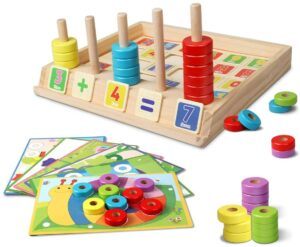
- Counting – Stacking the colors circle on the wooden sticks and match the numbers to learn the basic math. Also, learning counting by placing different math wooden chips.
- Puzzles – Match colors circles with five cartoon cards to complete the picture. Also possible to take out the colors circle separately and placing it to different shapes.
- Early Educational – Encourages hand-eye coordination and imaginative ability. Develop the brain thinking, flexibility and operational ability.
- Perfect Gift for Preschool Education – Wooden toy gift for kids. The simple design and bright colors make children interested, also learning math basic addition and subtraction.
- Safe materials – Non-toxic and tasteless kids education wooden stem toys. Each part of the material is rounded and polished, soft and delicate.
2. Learning Resources MathLink Cubes, Homeschool, Educational Counting Toy, Math Cubes, Linking Cubes, Early Math Skills, Math Manipulatives, Set of 100 Cubes, Ages 5+
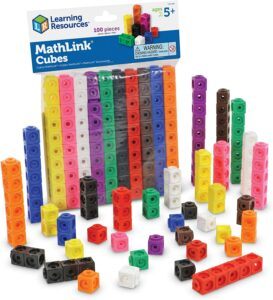
- SKILL DEVELOPMENT: Math skills (one-to-one correspondence, counting to 100, skip counting, Comparison, Making 10, Non-standardized measurements, Grouping, Addition, Subtraction, Graphing), Color identification, Shape identification, Patterning, Matching, Fine motor skills, Eye-hand coordination, Motor planning
- SCHOOL READINESS: Promote school readiness with activities that support math skills including counting, addition, and subtraction. Great for home school or classroom activity!
- EASY DESIGN: Cubes easily snap together on all sides of each cube with geometric shape cutouts for more complex patterning activities
- EARLY STEM ACTIVITY: MathLink Cubes feature geometric shape cutouts for visual and tactile STEM learning
- Homeschool supplies for ages 5+
Take-A-Ways
This post was written to assist parents, families and teachers to gain insights as to why patterning is so important to children’s STEM fluency? Patterns are the cornerstone of mathematics as mathematics is based on pattern and structure. It is natural for children to use pattern thinking in their daily activities. They learn through routines and rituals.Playing games can engage and sustain children’s interest in the repetitive use of mathematical skill . Games provide practice for skill building.
It is my sincere desire that you found this post of interest. Please feel free to leave your opinions, ideas, comments, and questions relating to this post. I am more than happy to respond to you in a timely manner.
You are free to share or like this page on any of the above social network. Click on them (Twitter, Facebook, Pinterest) on the top right of the page.
I welcome you sharing your children’s experiences using the suggested resources. Thank you for stopping by and have fun engaging your children!
Tracy-Ann Morgan-Smith, PhD, JP

